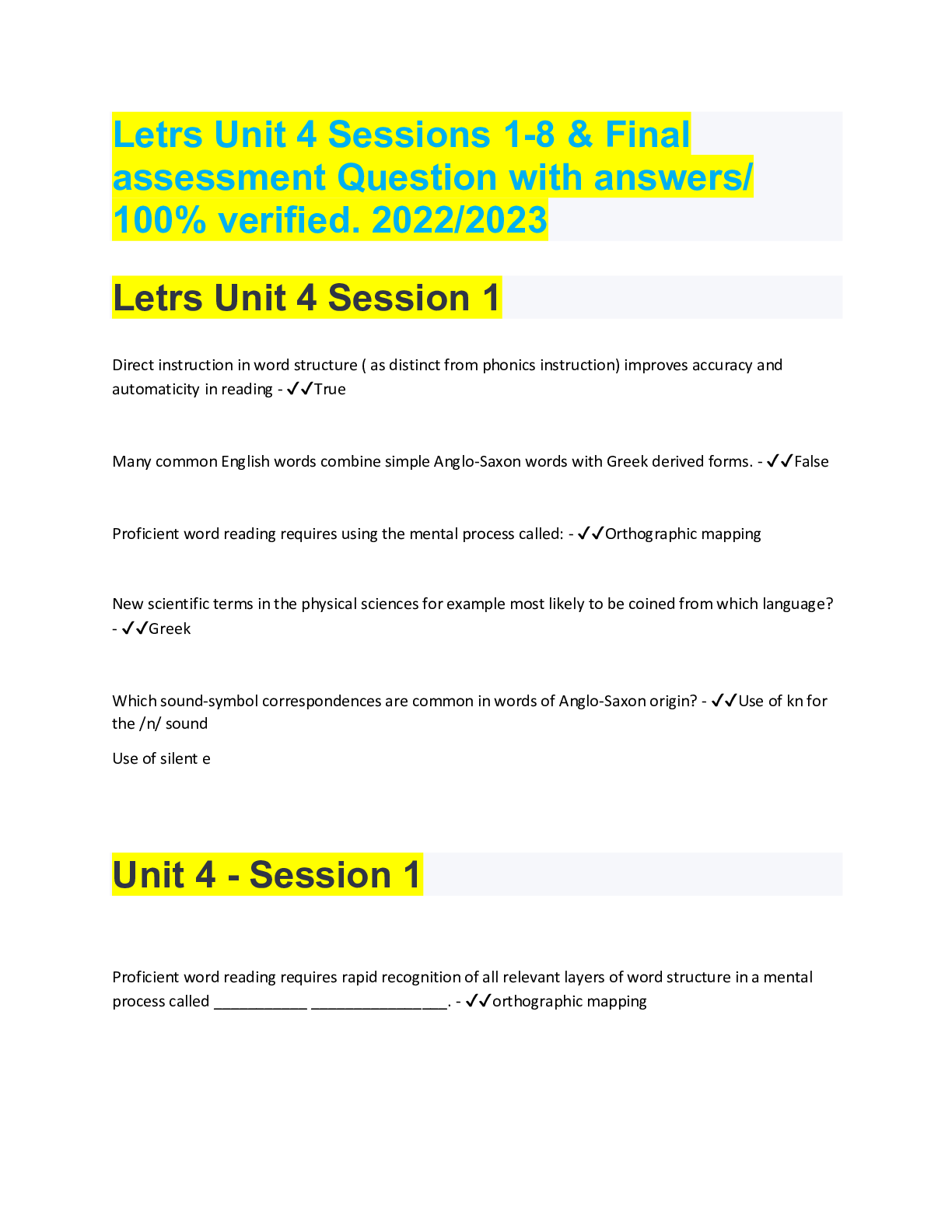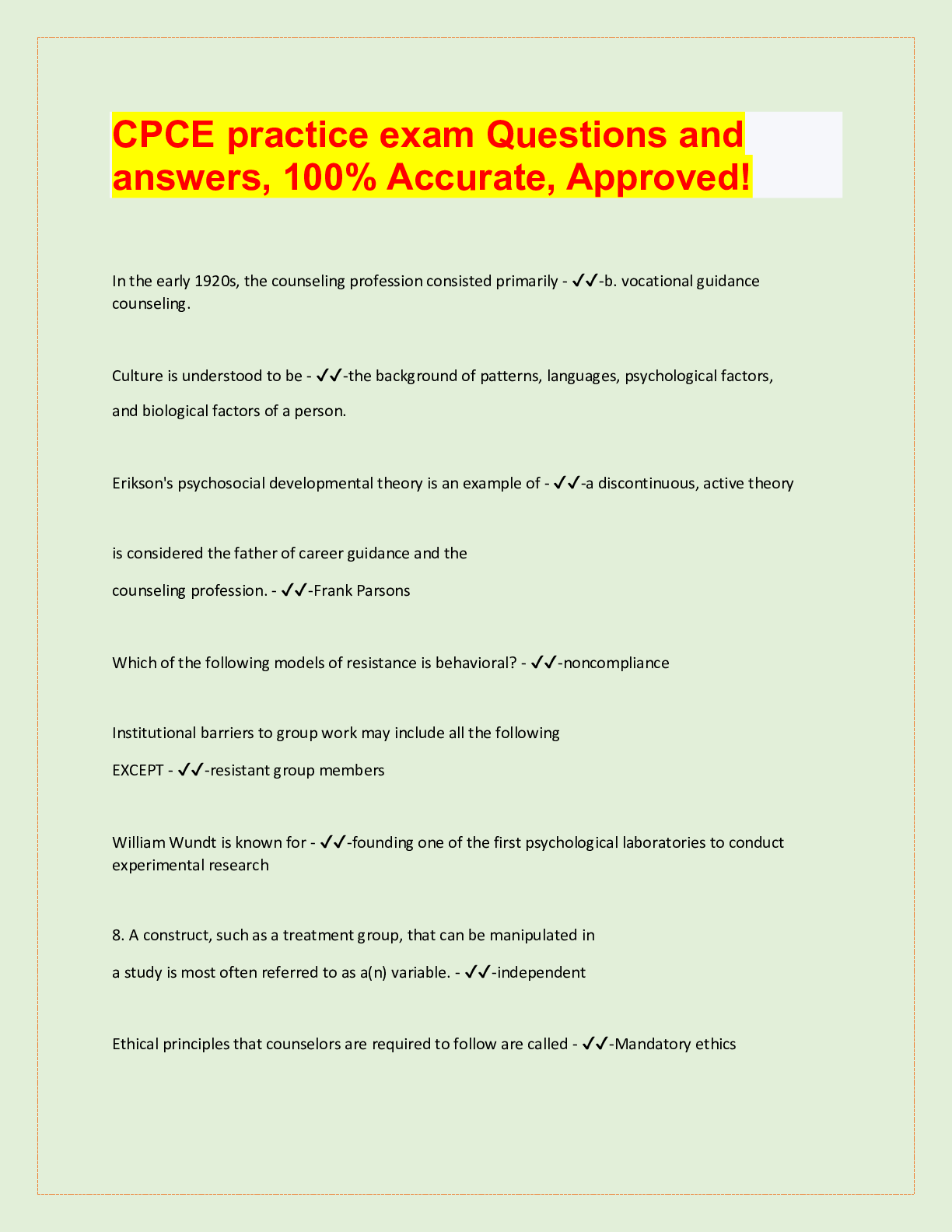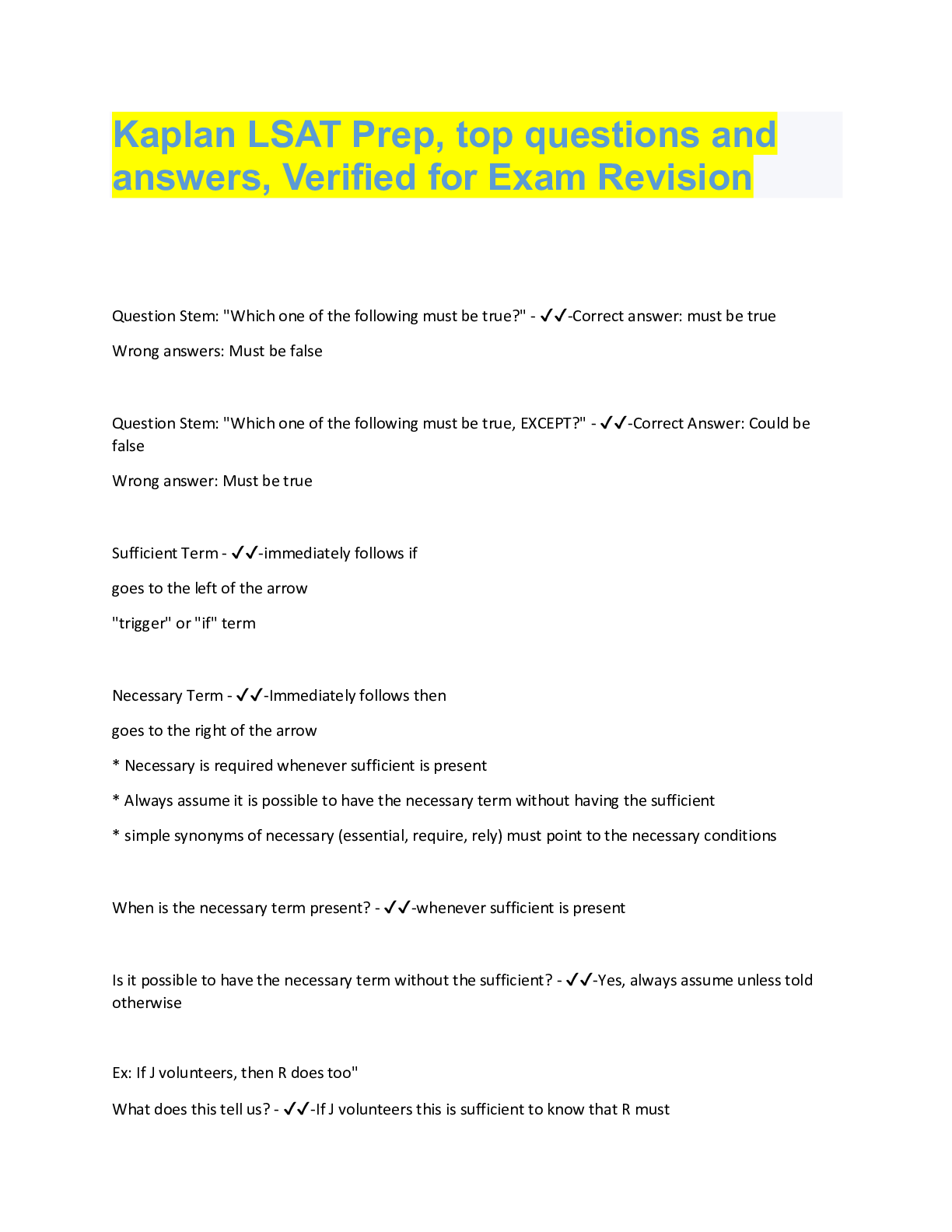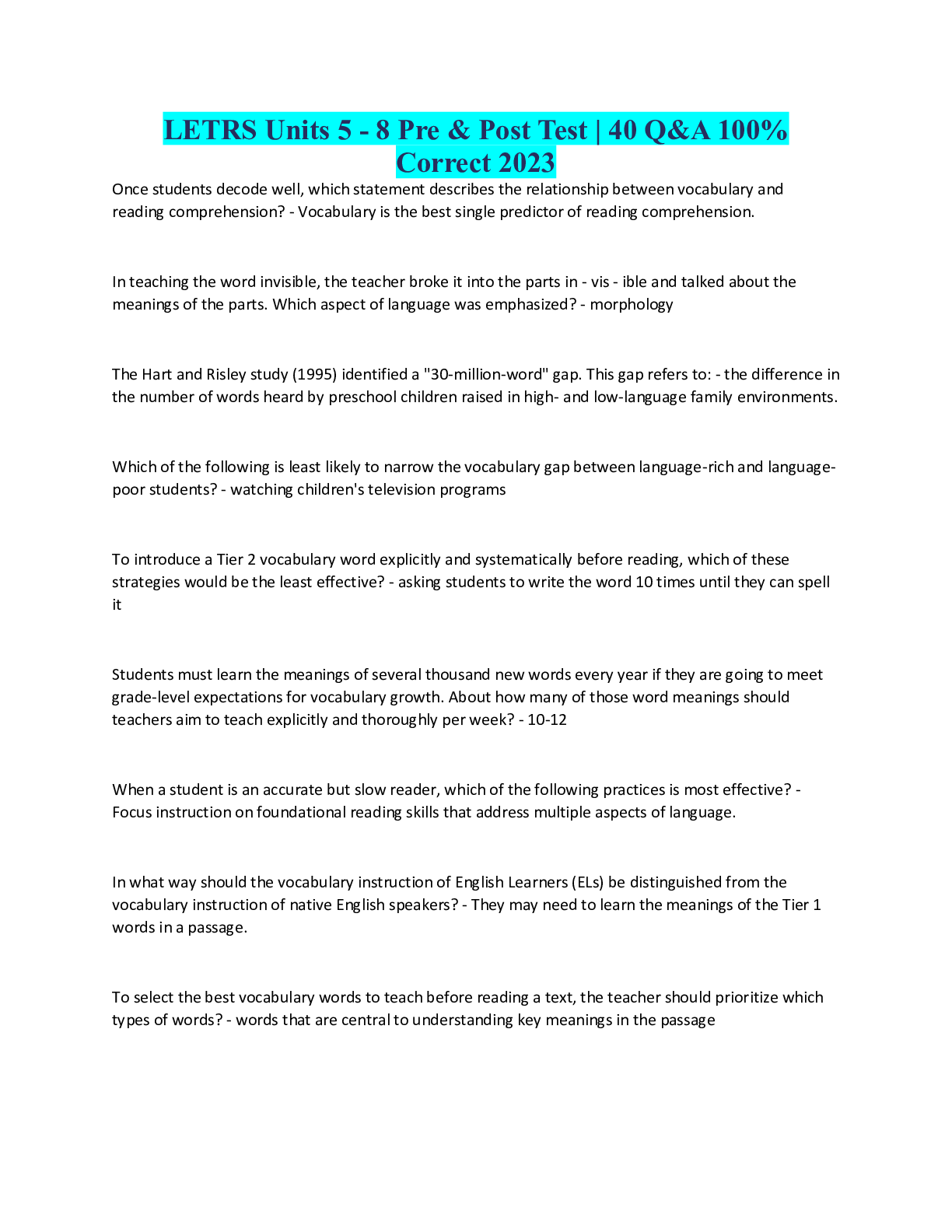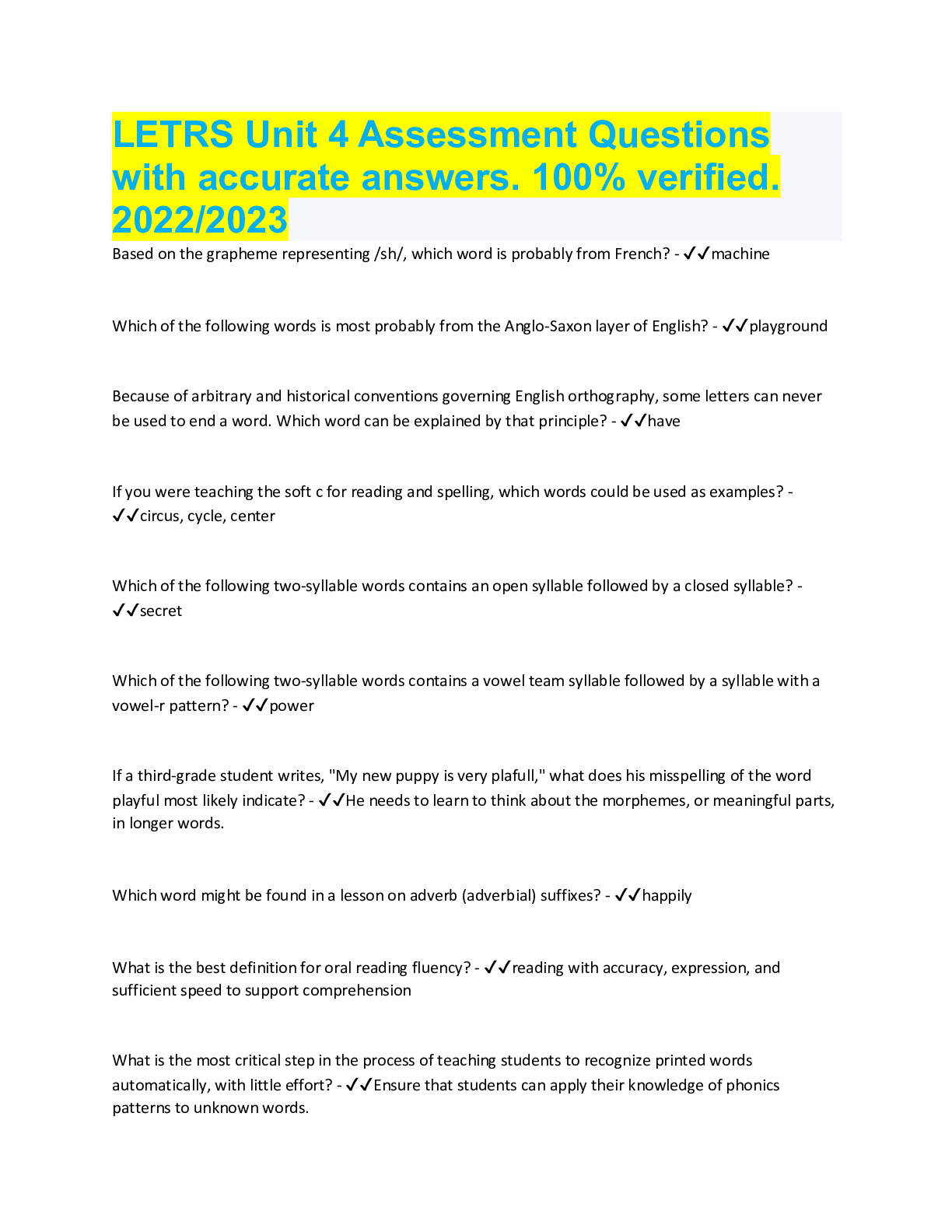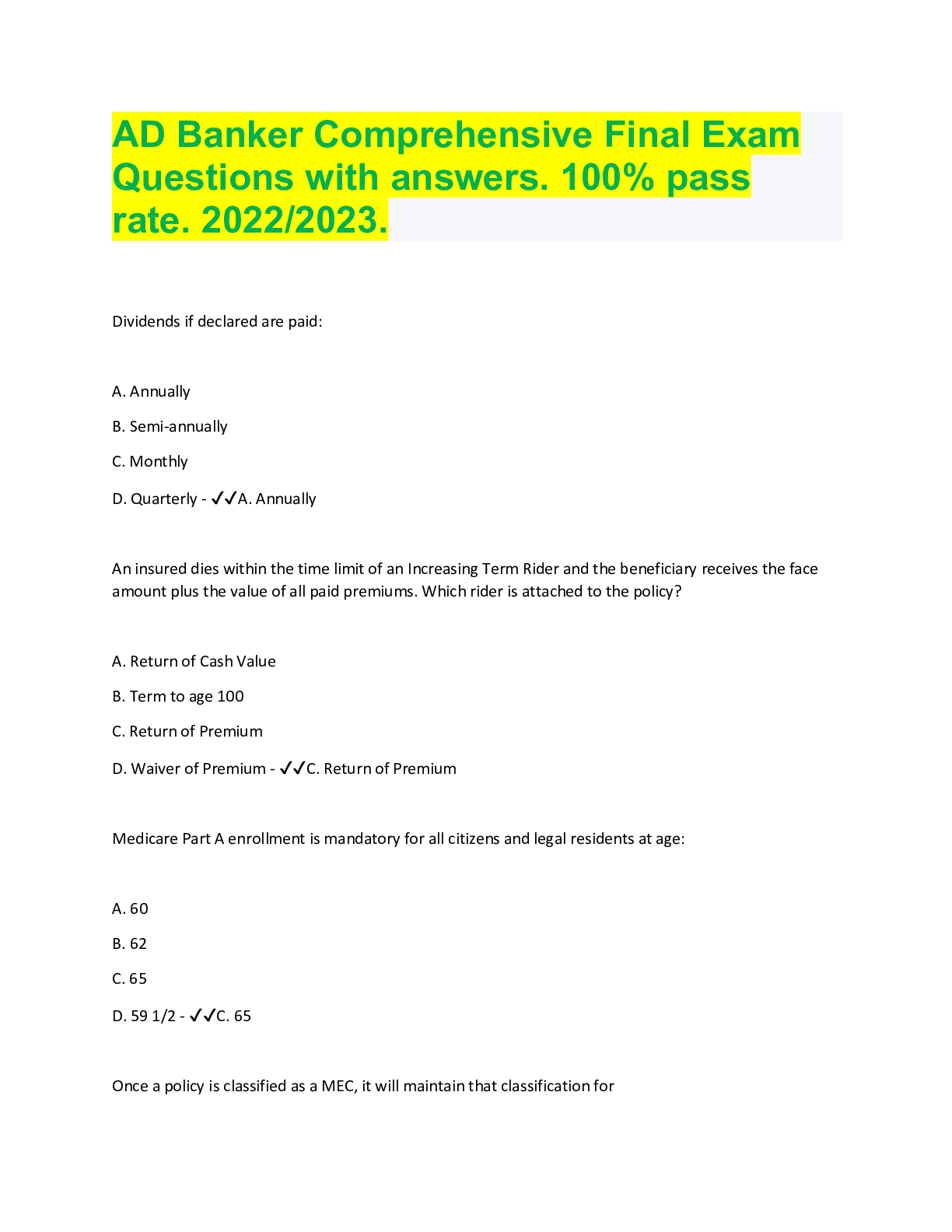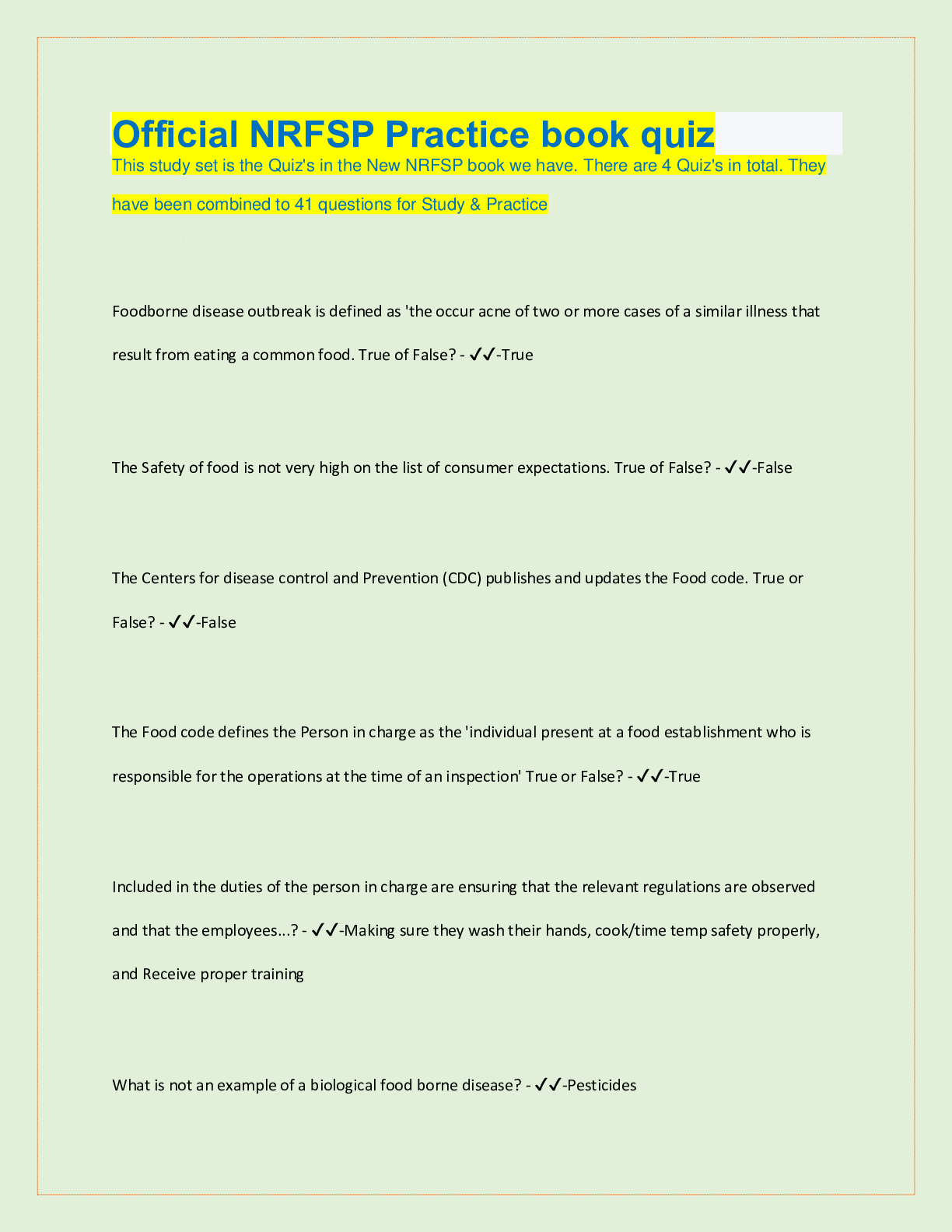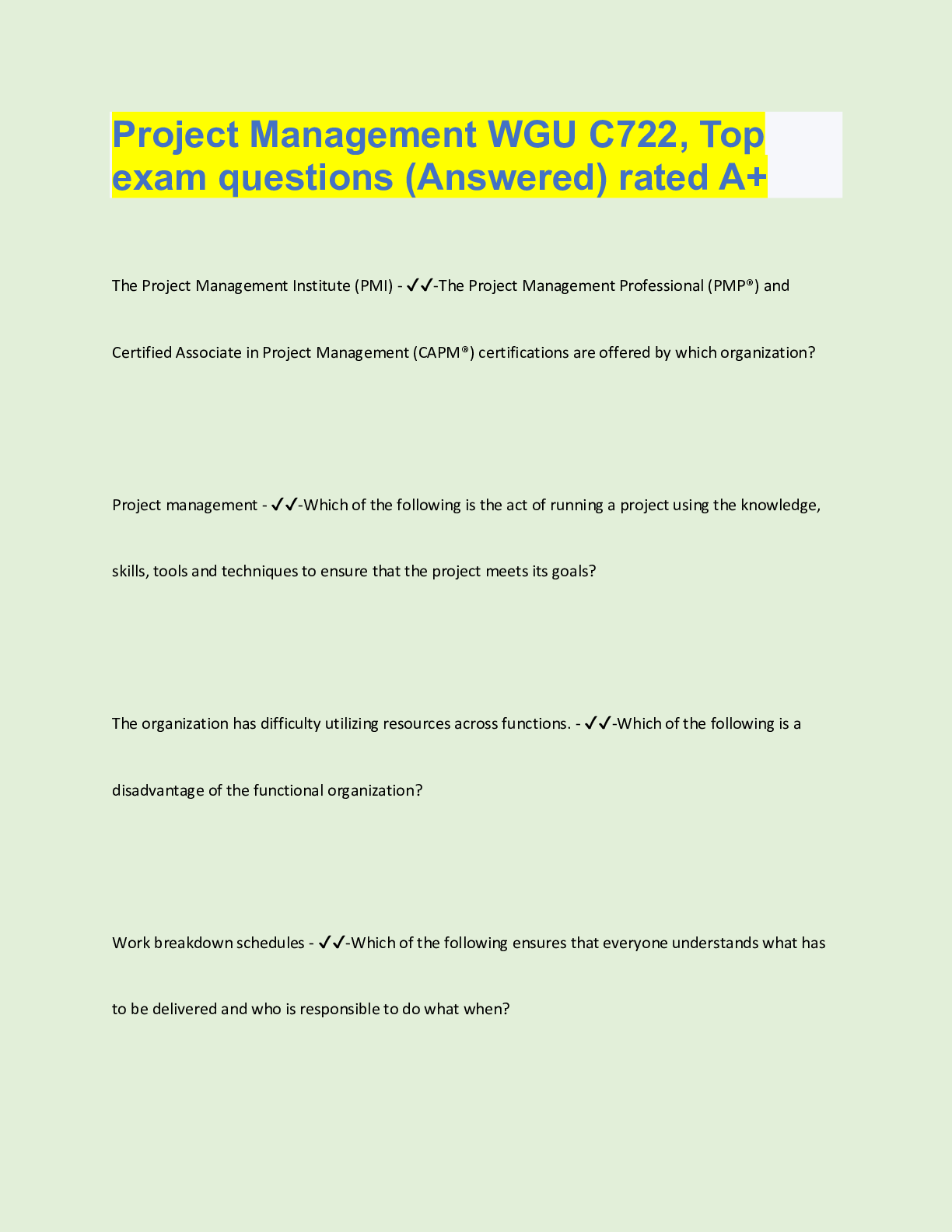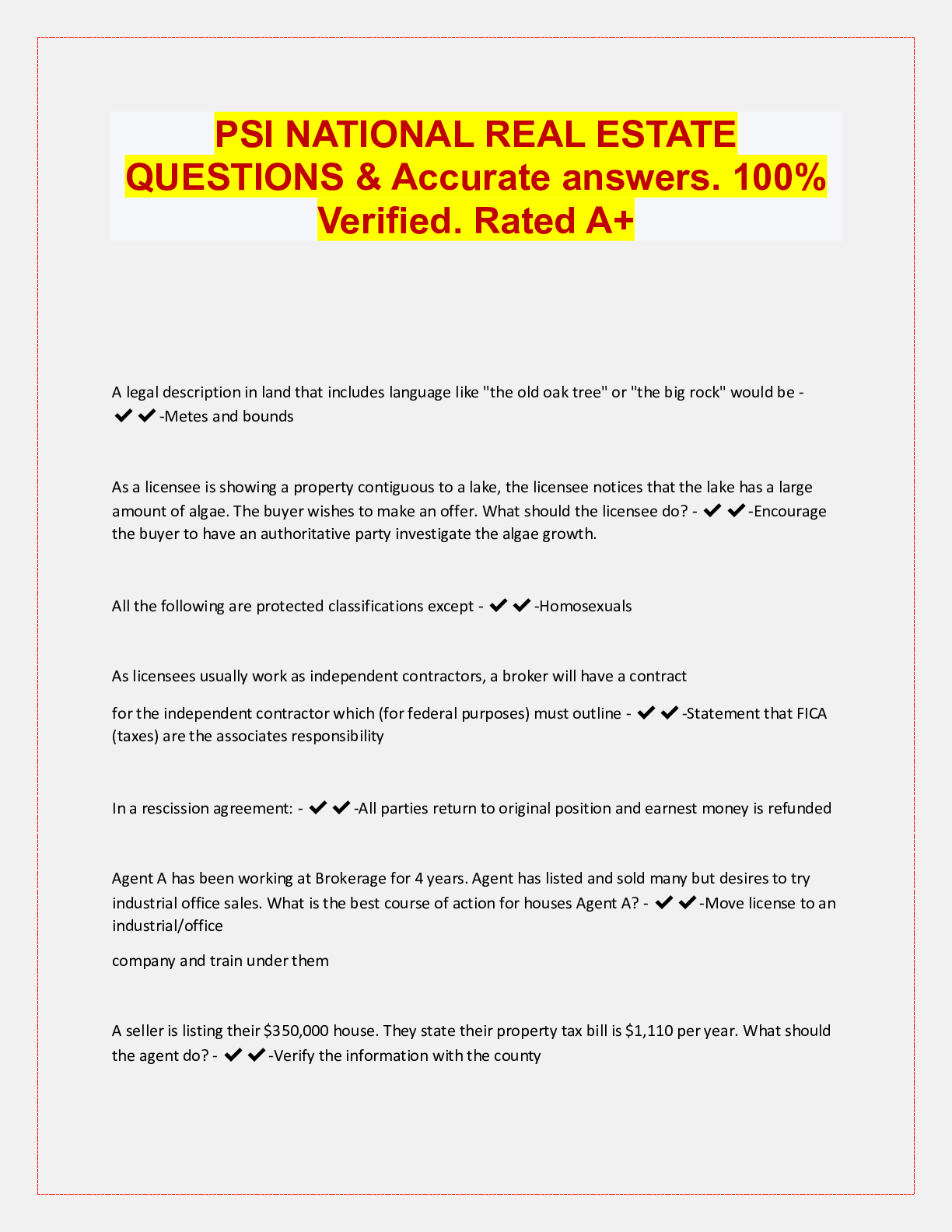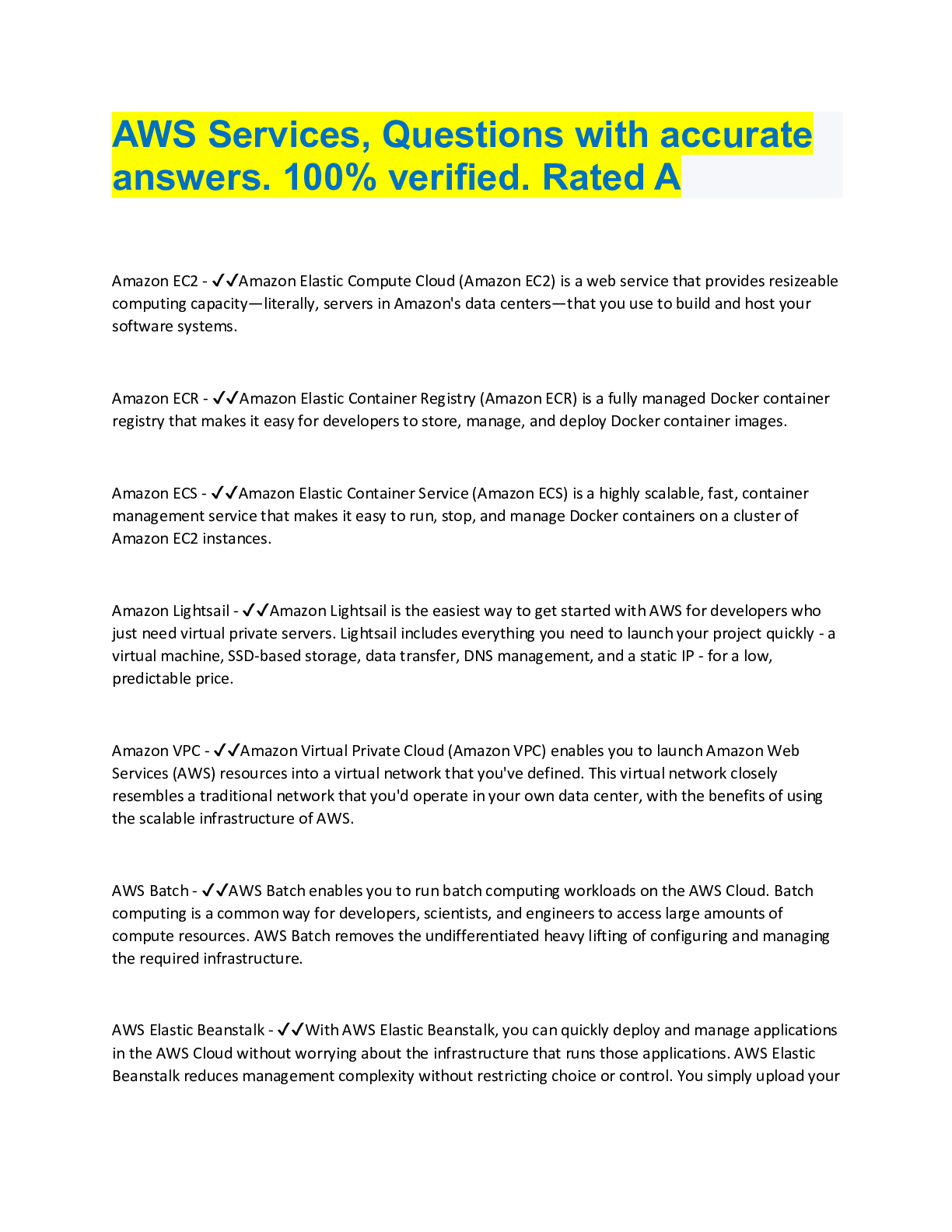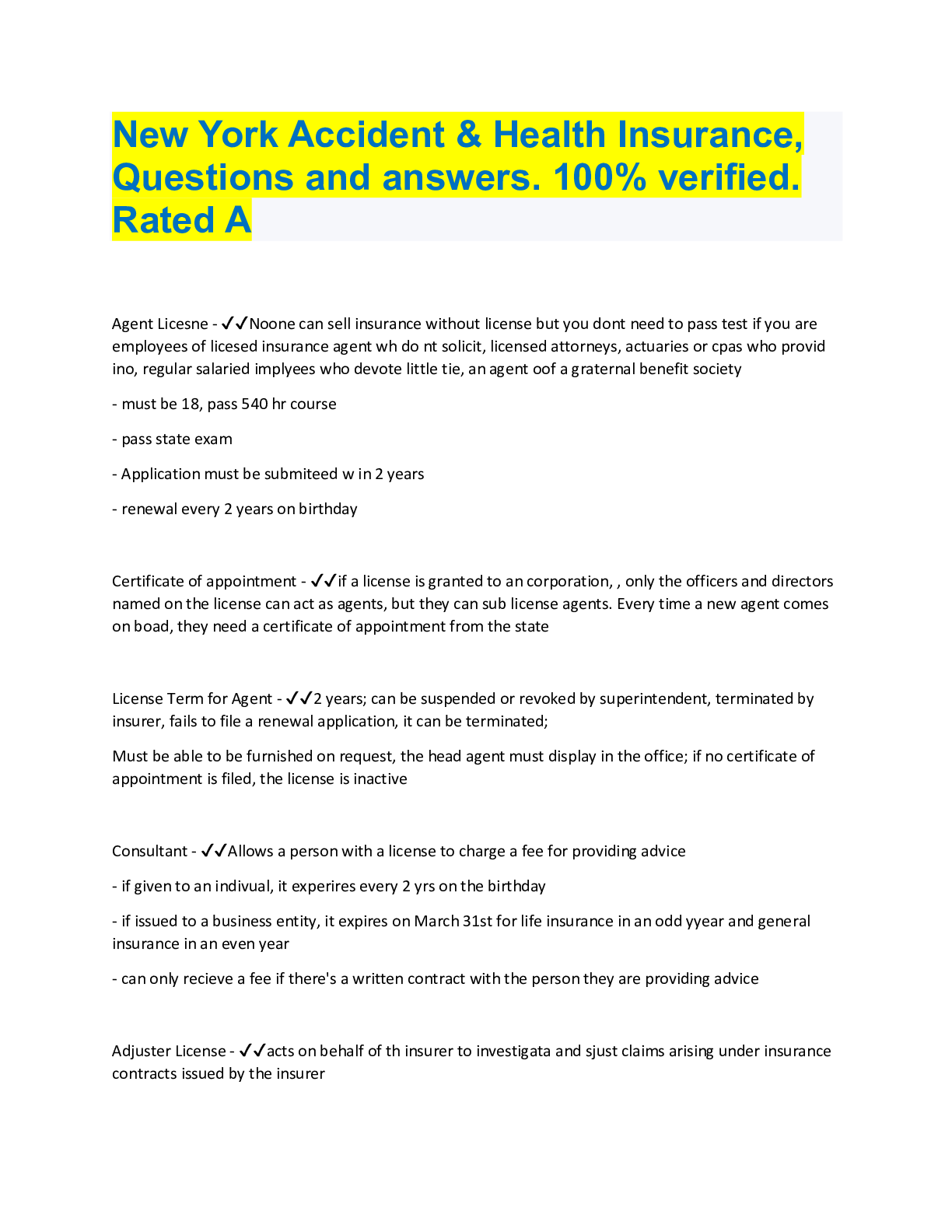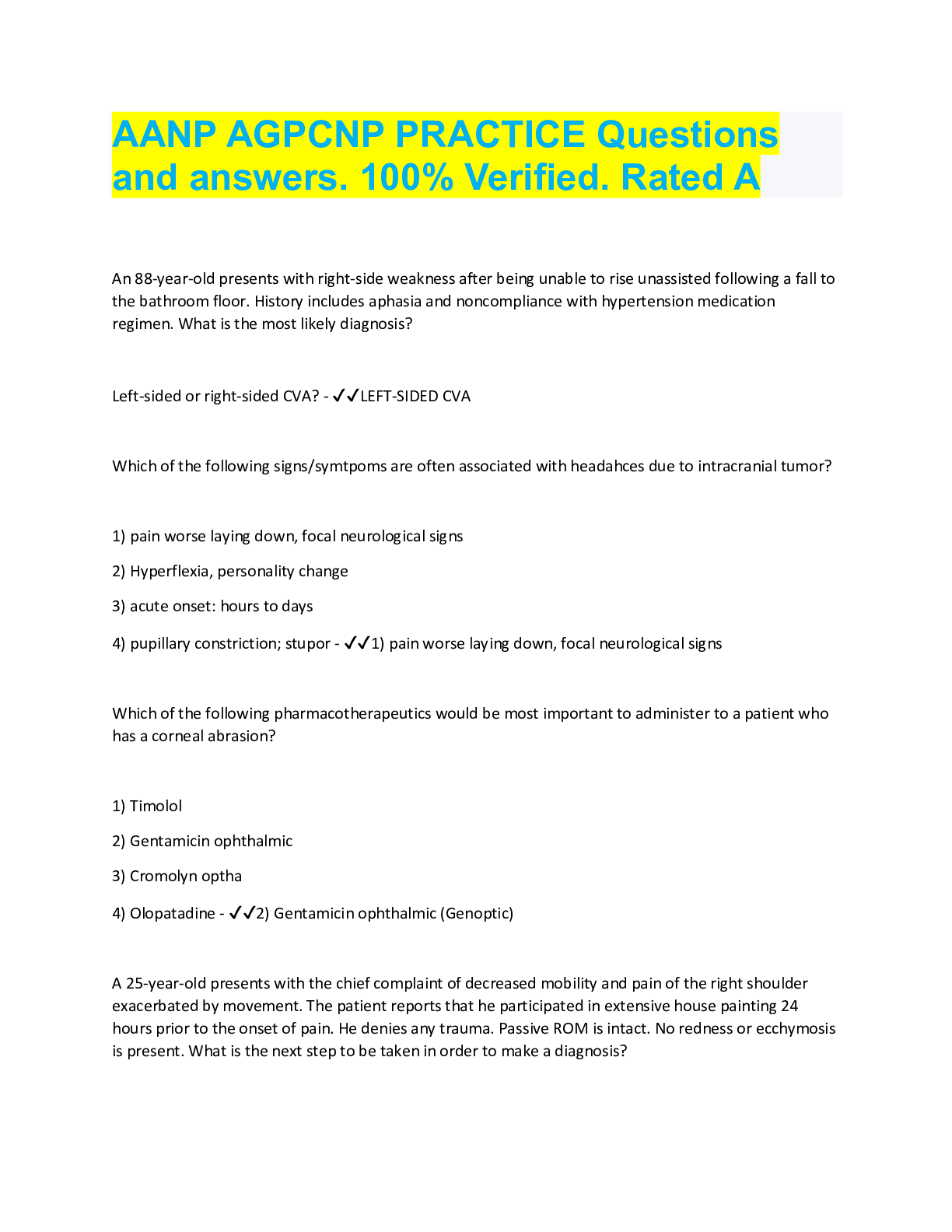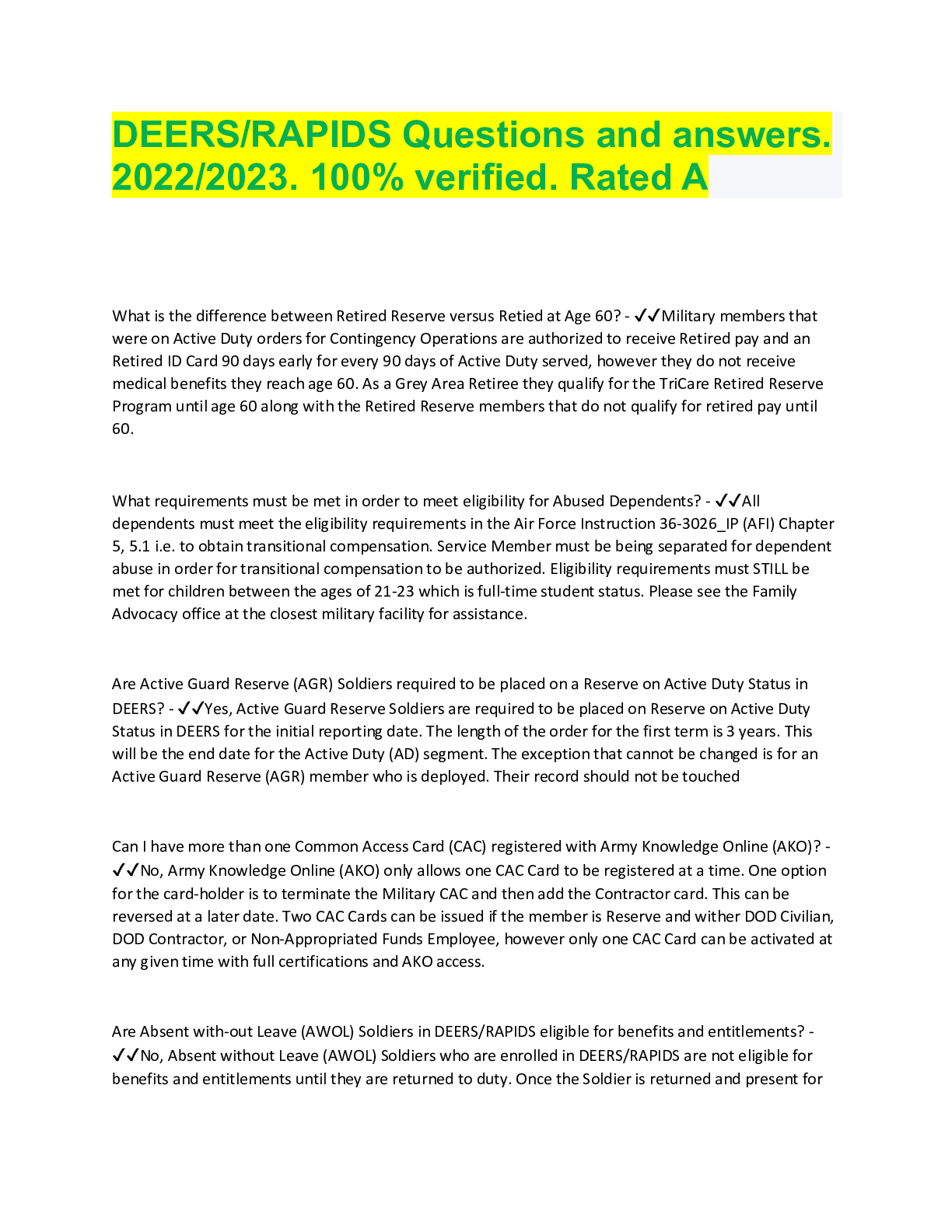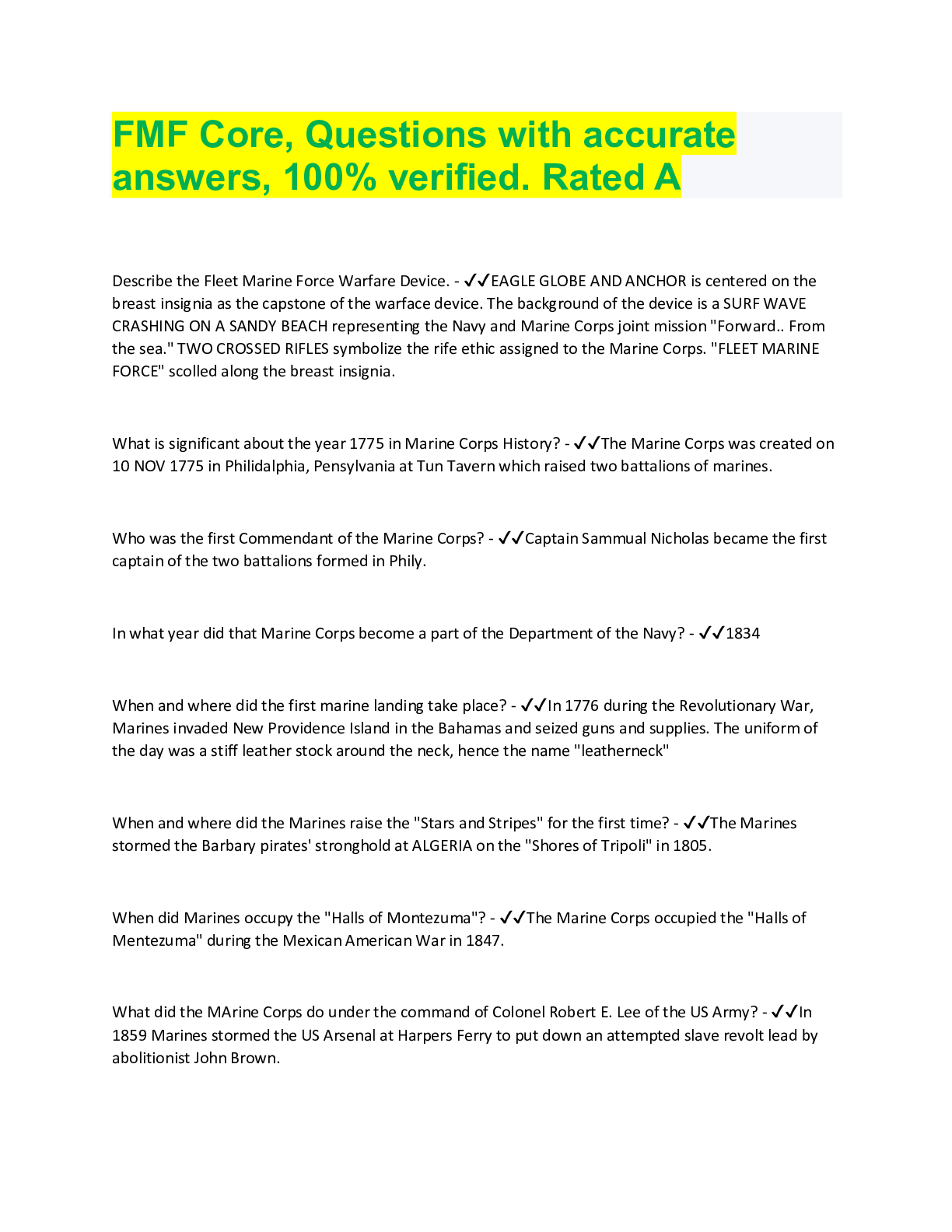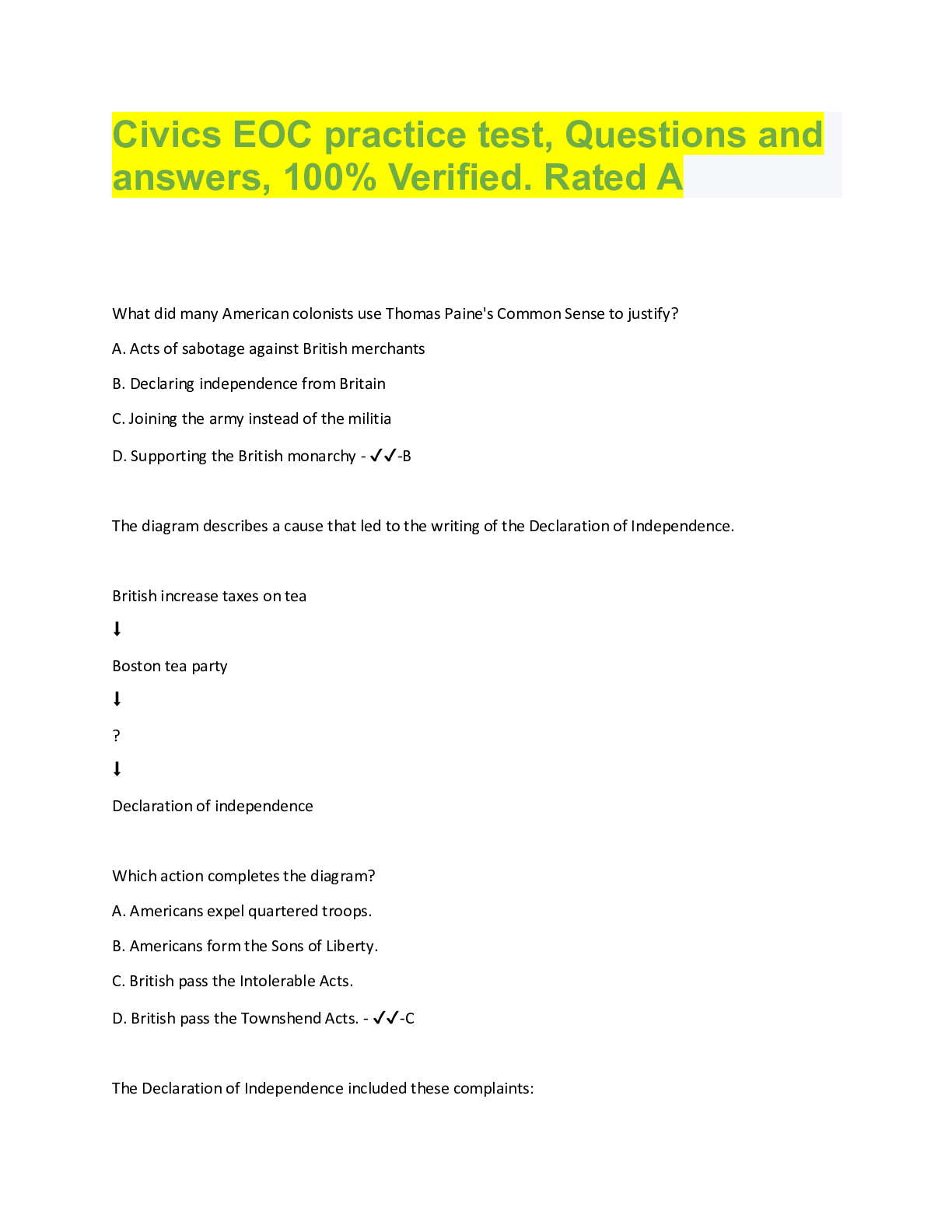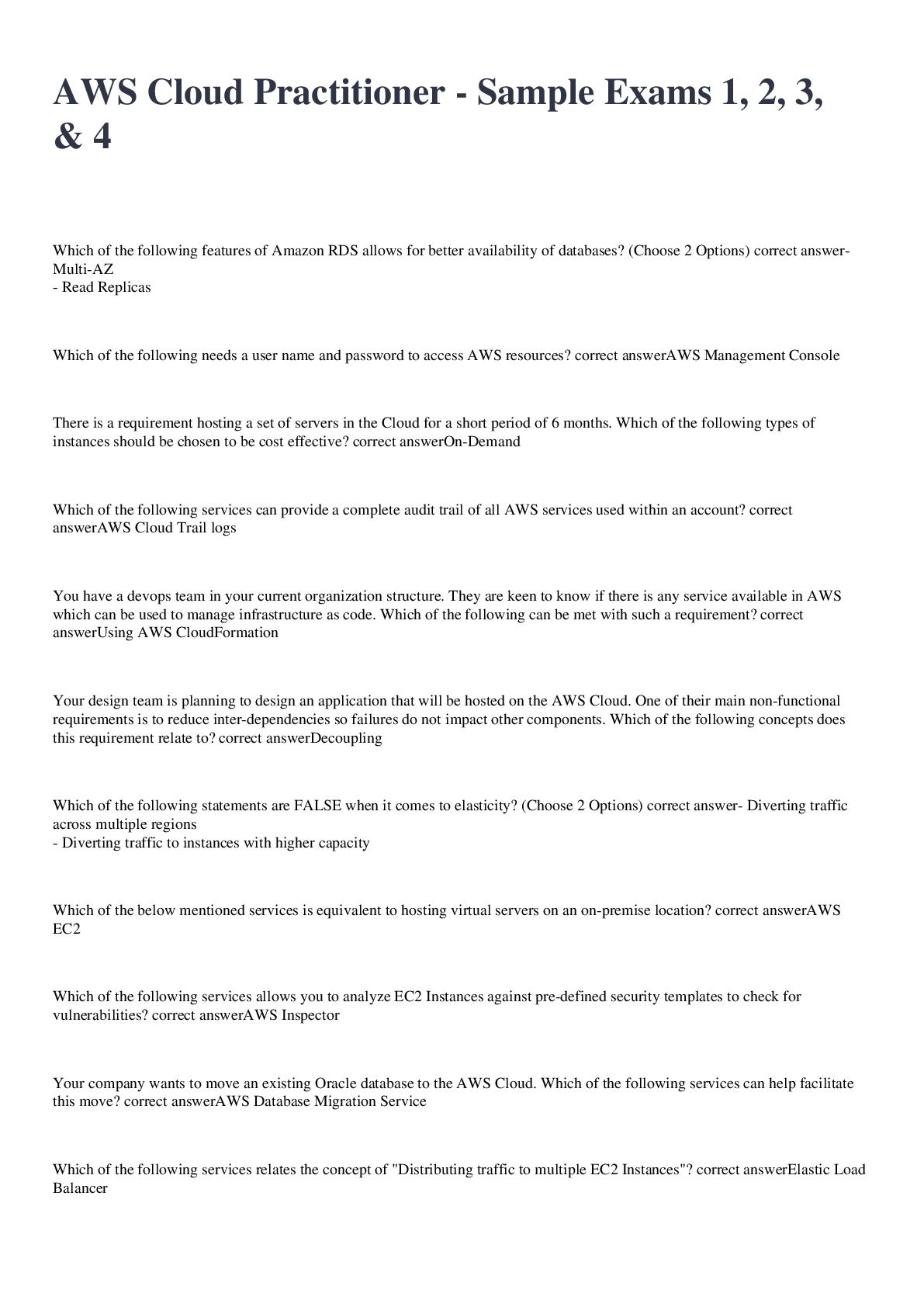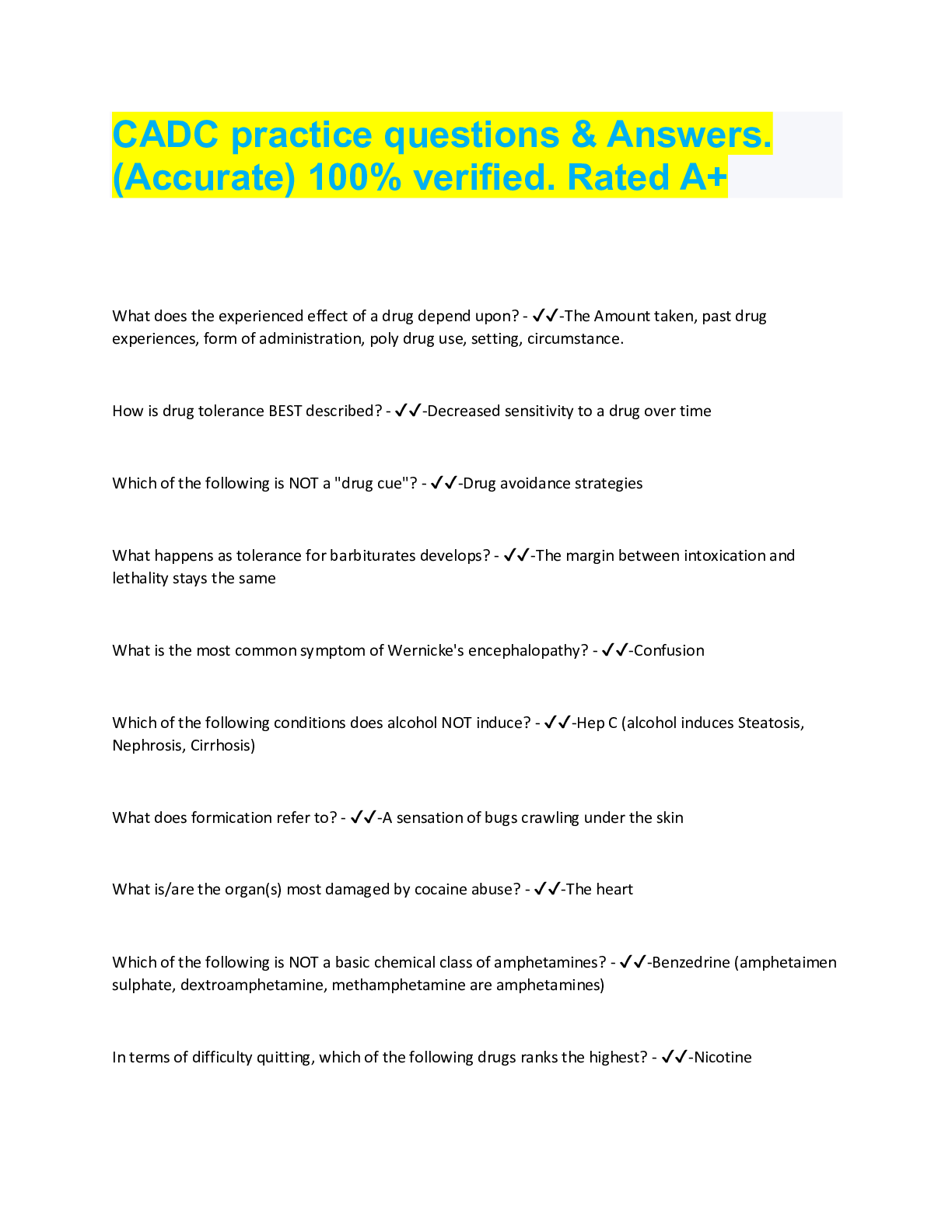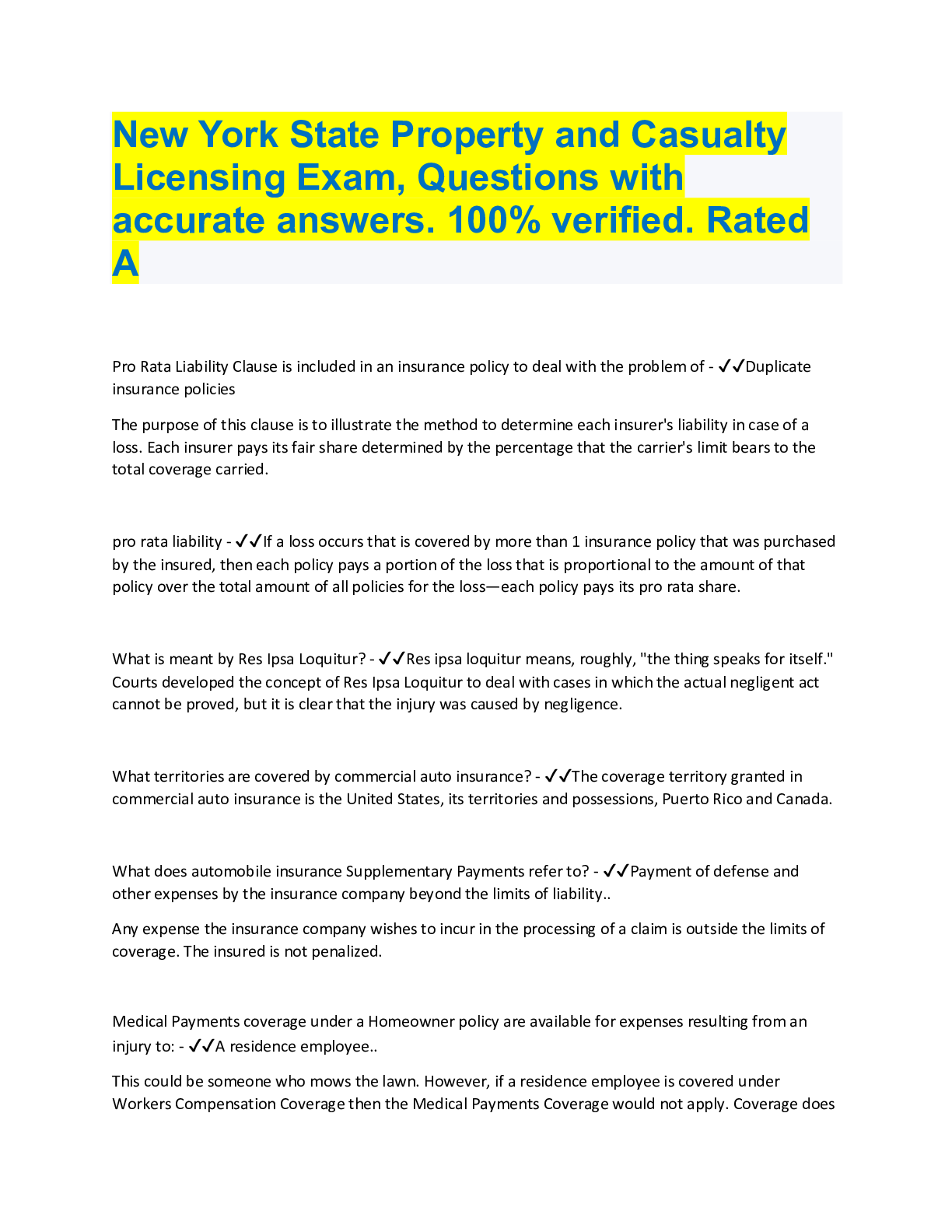Language Development > QUESTIONS & ANSWERS > LETRS Unit 3 Sessions 1-8 & Final Assessment Questions and answer. 100% Verified. Rated A. 2022/2023 (All)
LETRS Unit 3 Sessions 1-8 & Final Assessment Questions and answer. 100% Verified. Rated A. 2022/2023
Document Content and Description Below
LETRS Unit 3 Sessions 1-8 & Final Assessment Questions and answer. 100% Verified. Rated A. 2022/2023 LETRS unit 3 session 1 Teachers who take a code-emphasis approach to instruction generally ... do not discuss the meanings of words being taught. - ✔✔False The ability to decode a new, previously unknown printed word, in or out of context, depends on (select all that apply): - ✔✔A. Knowledge of phoneme-grapheme correspondences. C. The ability to blend phonemes and graphemes quickly. The term phonics may be used to refer to (select all that apply): - ✔✔-the system of phoneme-grapheme correspondences that are the basis for an alphabetic orthography. -an essential component (one of the five pillars) of effective reading instruction -a strategy for decoding new words and storing them in orthographic memory. Which of the following are typical of meaning-emphasis approaches to instruction? Select all that apply - ✔✔-emphasis on reading leveled texts individually -use of context (such as illustrations) to read words in texts Which of the following is typically done as an extended practice activity in phonics lessons? - ✔✔timed reading of learned words Unit 3 - Session 2 About _____ percent of all words in English can be spelled accurately by sound-symbol correspondence rules. - ✔✔50 Another _____ precent can be spelled accurately except for one speech sound (usually a vowel). - ✔✔36 Only about ______ percent of words in print today are truly irregular and do not fit any pattern. - ✔✔4 Most letters in English spelling have more than one ____. - ✔✔job A single consonant letter that represents a single consonant phoneme... - ✔✔Single Letter A double letter that represents one phoneme... - ✔✔Doublet A two-letter (di-) combination that stands for single phoneme in which neither letter represent its usual sound... - ✔✔Digraph A three-letter (tri-) combination that represents one phoneme... - ✔✔Trigraph Two or three graphemes, each one representing a phoneme. A blend is not one sound but two or three adjacent consonants before or after a vowel in a syllable... - ✔✔Consonants in Blends A letter combination where one or more letters is silent (i.e., does not represent the phoneme) but another letter does represent the phoneme. Most of these are of Greek or Anglo-Saxon derivation... - ✔✔Silent Letter Combinations The letter x is the only letter that stands for two phonemes, /k/ and /s/, and occasionally, /g/ and /z/. - ✔✔Odd Letter X The two letters, always together in English, stand for two sounds, /k/ and /w/. They do not stand for one sound. - ✔✔Combination qu When there is no consonant blend in a syllable, the syllabe is _________. - ✔✔simple When there is a consonant blend in a syllable it is ________. - ✔✔complex There are only two consonant ____________ -tch and -dge - ✔✔trigraphs The consonant spellings x and qu are special cases. When x follows a _________, which is most of the time in English spelling, it represents two phonemes, /k/ -/s/ in a blend. - ✔✔vowel A single letter vowel letter that stands for a vowel sound - ✔✔Single Letter A combination of two, three, or four letters that stand for a vowel. - ✔✔Vowel Team A single vowel letter followed by r that stands for a unique vowel sound. - ✔✔Vowel-r Combination A common pattern for spelling a long vowel sound. - ✔✔Vowel-Consonant-e (VCe) __________ readers and spellers can make more sense of English if they are shown that certain graphemes are used in initial, medial, and final positions in syllables. - ✔✔Novice LETRS unit 3 session 3 When students are "graduating" to the next Ehri's phase, their approach to reading will be qualitatively different than the previous phase. - ✔✔True Students with solid phonics skills tend to recognize sight words more quickly, reguardless of how regular the words' spelling are. - ✔✔True kasey has solid phonemic awareness and knows all 26 letters. Her phonetic spellings of speech sounds are logical, but she is just learning to spell words. Which phase best describes her? - ✔✔later alphabetic Which is the best way to assess students' ability to recognize real words in print? - ✔✔Have students do timed and untimed readings of regularly spelled nonsense words and real words; check that they can recognize words within two seconds. Which of the following should be a major instructional focus for students at the consolidated alphabetic phase? Check all that apply. - ✔✔-Have students decode two and three syllable words -Have students learn to plan before writing, and compose according to the plan. Unit 3 - Session 3 Students are likely to demonstrate one set of phase characteristics before _________________ to the next phase, in which the student's approach to reading will be qualitatively different from the previous phase. - ✔✔graduating Teaching must be _____________ to the appropriate student level for growth to occur. - ✔✔matched A student knows some, but not all, _____________ ___________ names and forms; practice alphabet matching, naming, and ordering until alphabet letters can be named in random order and put in order. - ✔✔alphabet letter A student may be aware of how ______ looks - alternating letters, spacing, etc.; practice writing the letters until the alphabet can be written to dictation (model), dictation (no model) and memory. Use lowercase for writing; use uppercase and lowercase for naming. - ✔✔print A student may not understand the concept of a _______ _________; has little phonemic awareness; Gradually build associations between gestures, key words, and speech sounds. Emphasize articulation. - ✔✔speech sound A student is beginning to match words ________ by initial consonants; Blend the parts of compounds, then syllables, then onset-rime units, then phonemes in one-syllable, simple words. - ✔✔orally A student may lack knowledge of word ____________ or information required to understand text; Build vocabulary through read-alouds, theme units, and expressive language games. Stimulate verbal expression through retelling, structured conversation, and question-response routines. - ✔✔meaning A student tries to sound out by associating sound with _____ letter and, perhaps, another letter or two; guesses at the rest; Match all sounds on consonant and vowel charts to key words and common spellings. - ✔✔first A student wants to ______ on context (e.g., pictures, topical knowledge) to guess at words; Blend known phoneme-grapheme correspondences into words, left to right, as consonants and vowels are learned. Practice automatic recognition of high-frequency words (regular and irregular, a few per week. - ✔✔rely A student begins to read simple _____ with known words; Start to read decodable text with known letter-sound correspondences and high-frequency words. - ✔✔sentences A student attends to books read aloud, ______ and _________ questions, and retells what the reading is about; Browse text and predict before reading. - ✔✔asks and answers A student understands the _________ of classroom instruction; Differentiate question words (who, what, when, where, why, how); ask and answer questions. Retell or summarize what was read. - ✔✔language A student writes simple sentences to ____________; participates in shared writing; composes orally and attempts new spellings; Begin to spell high-frequency words accurately and to spell regular words by sound. - ✔✔dictation A student can spell words ______________, with all the speech sounds represented (letter name spellings still common); Increase knowlege of rime patterns, word families, "choice" spellings for consonants, and most common spellings for all vowel sounds. - ✔✔phonetically A student shows knowlege of letter ______________ and orthographic constraints; Read and spell blends and diagraphs. - ✔✔patterns A student is learning the most common _______ words for reading and spelling; Read and spells words with short vowels, vowel-consonant-e, and inflections such as -ed, -s, -ing. - ✔✔sight A student is starting to chunk common ____________ and letter sequences - such as -ing and -ack-and to read by analogy; Learn vowel teams and vowel-r patterns. - ✔✔syllables A student can read decodable text, although not ___________; commonly reads word by word; Read decodable text with learned patterns and sight words, increase fluency. Reread for context if decoding attempt does not make sense. Partner read; use peer-assisted tutoring routines. Expand theme-related vocabulary. Write and publish first storybooks. - ✔✔fluently A student can generalize phonics skills to ___________ words, then uses context as backup; Increase accuracy and automaticity with high-frequency words and regular words for reading. - ✔✔unknown A student is increasing __________ in passge; Decode two-syllable and three-syllable words, using most common syllable division principles. - ✔✔fluency A student recognizes more than 200 _________-______________ words by sight; Increase speed to 60-90 words per minute with independent reading material (95% correct). - ✔✔high-frequency A student uses context to fully identify the ____________ of new words; Expand vocabulary at rate of 800 or more words per year through second grade, then at the rate of 2,000 words per per. - ✔✔meanings A student can employ beginning comprehension ___________ - browsing, anticipating, questioning, clarifying, retelling and summarizing - with teacher support; Deepen awareness of different genres-narrative and expository-and how they are organized. - ✔✔strategies [Show More]
Last updated: 1 year ago
Preview 1 out of 23 pages

Reviews( 1 )

by revoir · 1 year ago
Document information
Connected school, study & course
About the document
Uploaded On
Oct 09, 2022
Number of pages
23
Written in
Additional information
This document has been written for:
Uploaded
Oct 09, 2022
Downloads
9
Views
356
